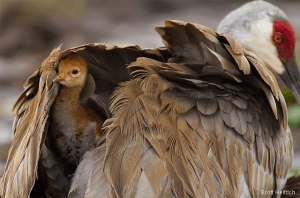We have much more to do and your continued support is needed now more than ever.
Interior Dept.: “Permanent Impacts to Wildlife” If Keystone XL Built

A recently uncovered letter from the U.S. Department of the Interior finds that the State Department’s analysis falls short in several regards. Primarily, it fails to acknowledge permanent, long-term impacts to wildlife that will result from the pipeline. It also points to other inaccuracies, inconsistencies and failures to properly specify and analyze important information.
Here are some of the Interior Department’s major concerns:
- Contrary to State Department’s conclusion that wildlife impacts will largely be indirect and short-term, DOI concludes that, “There will be several types of permanent impacts to wildlife that will result from this project.”
- Calling State Department’s conclusions about wildlife impacts “inaccurate,” DOI points to “direct” impacts to wildlife that “will occur throughout the life of the project” such as “such as wildlife collisions and electrocutions with power lines and vehicle collisions with wildlife on project access roads.”
- DOI finds that a classification method to be used by the State Department to assess stream value “appears to be arbitrary,” “does not address the ecological significance of a small perennial waterbody located in a landscape with little flowing water,” and “downplays the ecological significance of effects from selected crossing methods.”
- It finds that certain conclusions that the project will not negatively impact endangered species like the pallid sturgeon appear “unsupported.”
- DOI is concerned that impacts to migratory bird species are not properly examined and that “an oil spill occurring in [key areas along the pipeline route] could severely impact critical habitat for migratory birds” like the Sprague’s pipit.
- Discussion of impacts to wildlife and other resources is too narrow and “should be revised to reflect the full footprint of the project and account for all acres of wildlife habitat that will be impacted by the project,” not just the impacts of the right-of-way.
- Mitigation measures for wildlife are unclear and it is not clear how there will be accountability for putting in place such measures.
State Department’s analysis continues to falter under scrutiny. This is not surprising given recent revelations that the firm largely responsible for producing it covered up its ties to TransCanada, the company pushing the pipeline.
President Obama promised to reject Keystone XL if it exacerbates carbon pollution. The evidence is clear that it will do just that. The DOI letter reminds us that the pipeline is a bad idea for a lot of other reasons as well, not least of which are the many direct threats to wildlife – Keystone XL would also raise gas prices.
![]() Ask President Obama to say no to the Keystone XL pipeline.
Ask President Obama to say no to the Keystone XL pipeline.






















